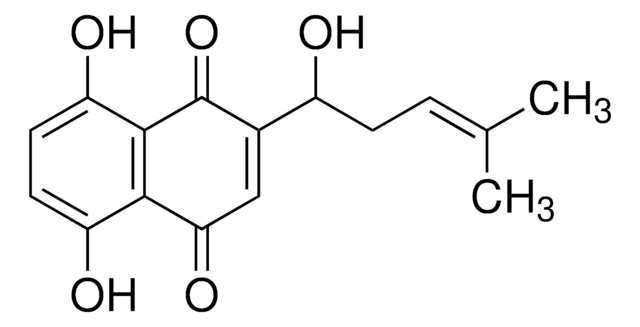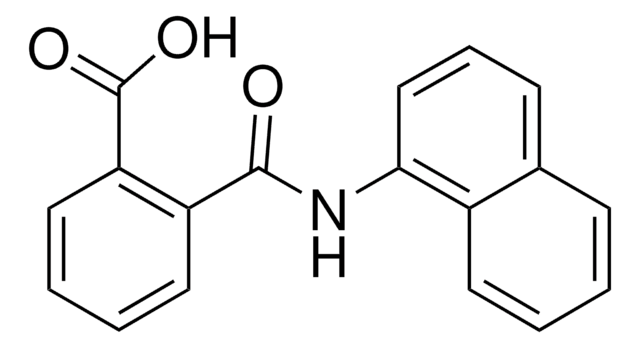P8861
Pyrrolnitrin from Pseudomonas cepacia
≥98% (HPLC), solid
Synonyme(s) :
3-Chloro-4-(3-chloro-2-nitrophenyl)pyrrole
About This Item
Produits recommandés
Niveau de qualité
Pureté
≥98% (HPLC)
Forme
solid
Spectre d'activité de l'antibiotique
fungi
Mode d’action
enzyme | inhibits
Conditions d'expédition
wet ice
Température de stockage
−20°C
Chaîne SMILES
[O-][N+](=O)c1c(Cl)cccc1-c2c[nH]cc2Cl
InChI
1S/C10H6Cl2N2O2/c11-8-3-1-2-6(10(8)14(15)16)7-4-13-5-9(7)12/h1-5,13H
Clé InChI
QJBZDBLBQWFTPZ-UHFFFAOYSA-N
Spécificité
Application
Actions biochimiques/physiologiques
Mention d'avertissement
Warning
Mentions de danger
Conseils de prudence
Classification des risques
Eye Irrit. 2 - Skin Irrit. 2 - STOT SE 3
Organes cibles
Respiratory system
Code de la classe de stockage
11 - Combustible Solids
Classe de danger pour l'eau (WGK)
WGK 2
Point d'éclair (°F)
Not applicable
Point d'éclair (°C)
Not applicable
Équipement de protection individuelle
dust mask type N95 (US), Eyeshields, Gloves
Certificats d'analyse (COA)
Recherchez un Certificats d'analyse (COA) en saisissant le numéro de lot du produit. Les numéros de lot figurent sur l'étiquette du produit après les mots "Lot" ou "Batch".
Déjà en possession de ce produit ?
Retrouvez la documentation relative aux produits que vous avez récemment achetés dans la Bibliothèque de documents.
Notre équipe de scientifiques dispose d'une expérience dans tous les secteurs de la recherche, notamment en sciences de la vie, science des matériaux, synthèse chimique, chromatographie, analyse et dans de nombreux autres domaines..
Contacter notre Service technique





